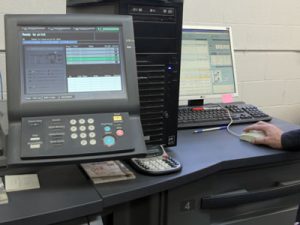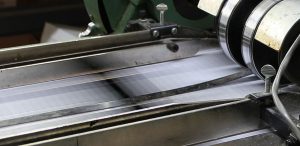Offset Lithographic Printing and Digital Printing, PROS and CONS of each.
Every printing project is different and designers need to take into account, how quickly the job is needed, the quality requirements, quantity needed and their budget when considering digital and traditional offset lithography. We will help select the right method for you based on the project, but use the following checklist to help you decide which may be best for your project.
Both printing systems have their pros and cons which you need to consider before making your final decision.
Digital Printings
 PROS
PROS
Cheaper low volume printing. Modern commercial digital printers are fast and are an inexpensive option for short run printing jobs, usually 500 or fewer pieces. Digital presses can run a job as soon as the art is ready, with no delays to make printing plates and ink-up a large offset press, so the turnaround can be very quick. While the cost of each piece may be higher than with offset printing, when setup costs are included digital printing provides lower per unit costs for very small print runs. Digital printing is ideal for projects that are needed quickly with quantities as low as a single sheet.
Variable Data Printing is a form of customisable digital printing. Using information from a database or external file, text and graphics can be changed on each printed piece without stopping or slowing down the press. For example, personalised letters can be printed with a different name and address on each letter. Variable data printing is used primarily for direct marketing, customer relationship development, advertising, and fund raising.
Digital presses are also perfect for printed pieces that need to be changed or updated frequently.
Mountain States Lithographing can provide these services and will advise you if our digital printers are the right choice for your project.
CONS
Digital printers are constantly and quickly improving, despite this they still can’t match offset printing presses when it comes to flexibility. Digital printers are limited to a narrow array of papers and colors. Where an offset press can use the Pantone Color Matching System and inks to deliver unparalleled color accuracy. Digital printers use a fixed four color printing process and a matching process to simulate colors, which cannot quite match the accurate colors of traditional offset printing.
A digital printers inks are not absorbed into the printing paper fully, this means that cracks can appear in the color near edges that are folded in the finished publication. This is not a problem in traditional offset printing. It’s also important to remember that traditional offset printing can be more cost effective than digital printing for higher volume print runs as the individual unit price comes down.
Considering the superior quality of traditional offset printing, a traditional offset printer is a better choice for higher volume print runs than a digital printer.
Lithographic Offset Printing
 PROS
PROS
For the highest quality printed pieces, lithographic offset presses are the best choice by a large margin. Modern technology has developed to the point of computer-to-plate systems that deliver very high accuracy and quality at a reasonable cost.
Offset printing presses offer more choice when it comes to print materials. Many graphic design projects require unique paper types and sizes, specialized inks and finishes, such as metallic inks, specific colors and varnishes. If your project demands the best quality or unique paper then the offset press is likely the best choice.
With the combination of the Pantone Matching System and Pantone inks makes traditional offset presses the best choice when complete control is needed and color accuracy is required. The four color process used for digital printing simply cannot compete with traditional offset printing presses.
If your project requires a high volume, traditional offset printing is not only more cost effective but can be quicker. Much of the time and cost associated with traditional offset printing is due to the preparation and press set up, however, if you have a high volume print run the unit costs are drastically reduced, once the set up is complete the pieces are relatively cheap to print.
CONS
So what are the drawbacks of offset printing? It is not possible, or costly to change the print jobs during the print run since the press setup has to be changed or redone. This can be very time consuming, particularly when compared to digital printing, which is why digital printers are the best option for print jobs requiring a lot of customization within a short time frame.
Traditional lithographic offset printing is more costly for low volume print runs This is due to the time it takes to setup an offset press and the cost of the printing plates, this raises the price per piece for short print runs. Digital printers are the best choice for quick and low cost short run printing.
In summary, the choice of commercial printing processes will depend on your quality, needed options and volume as well as your budget and time schedule.
Contact one of the printing experts at Mountain States Lithographing with your individual requirements for solid, professional advice.
~Kendall Bassett

